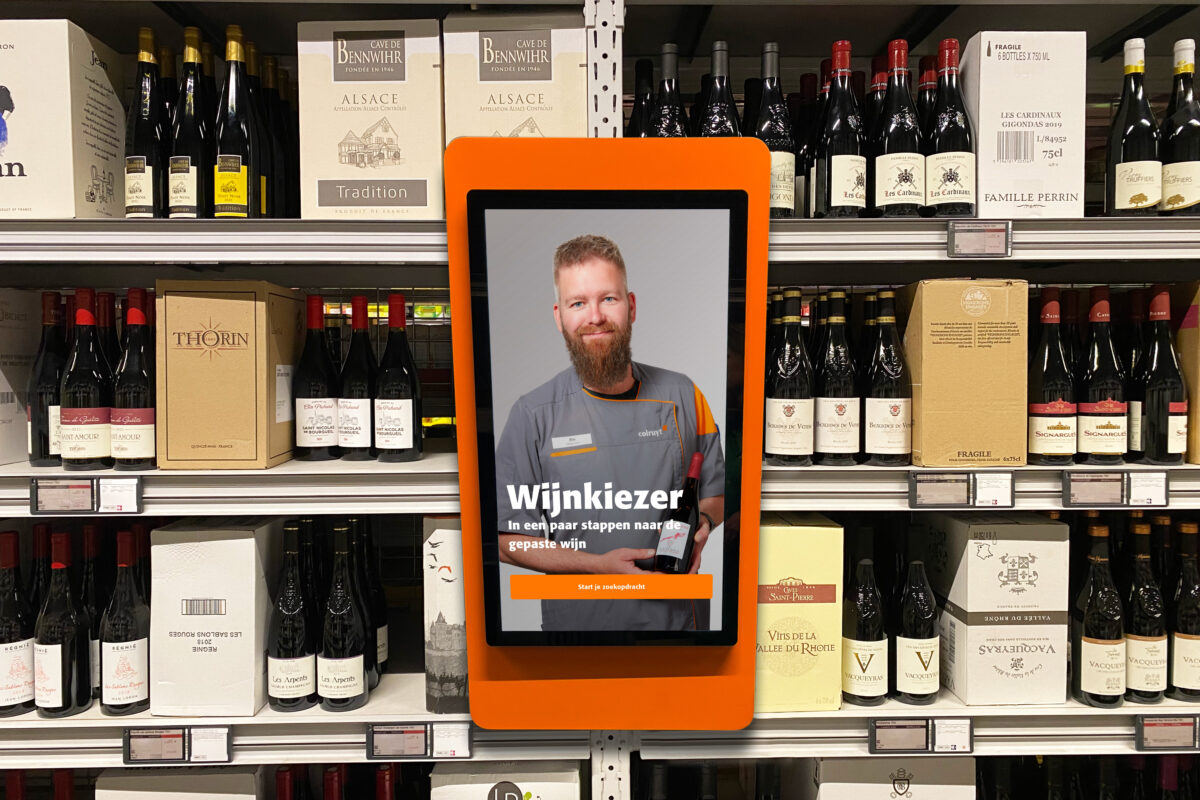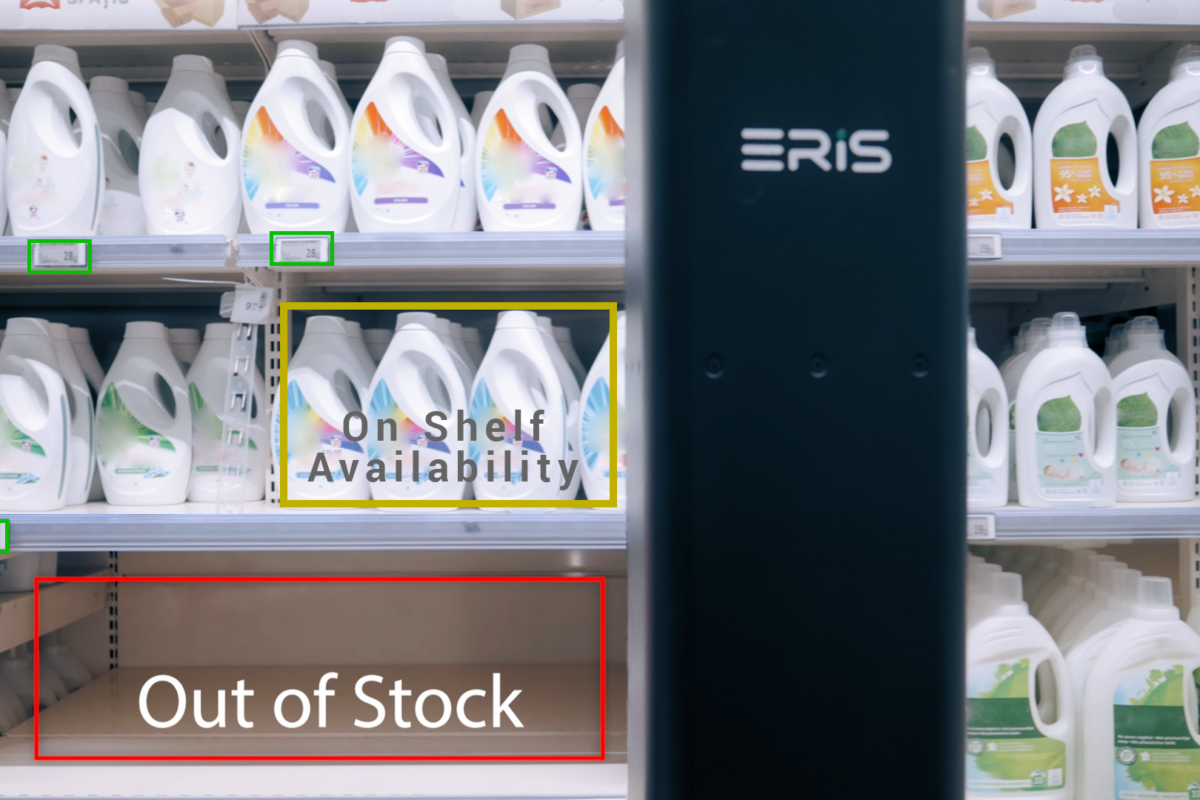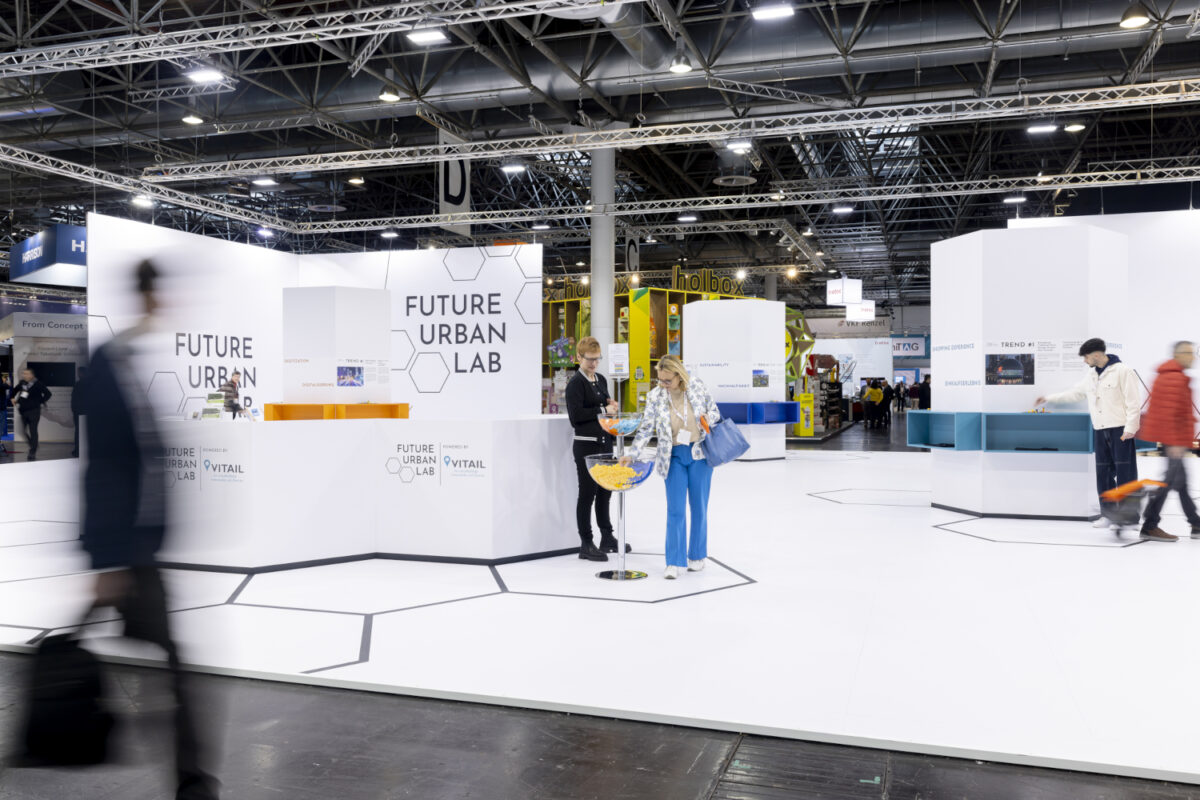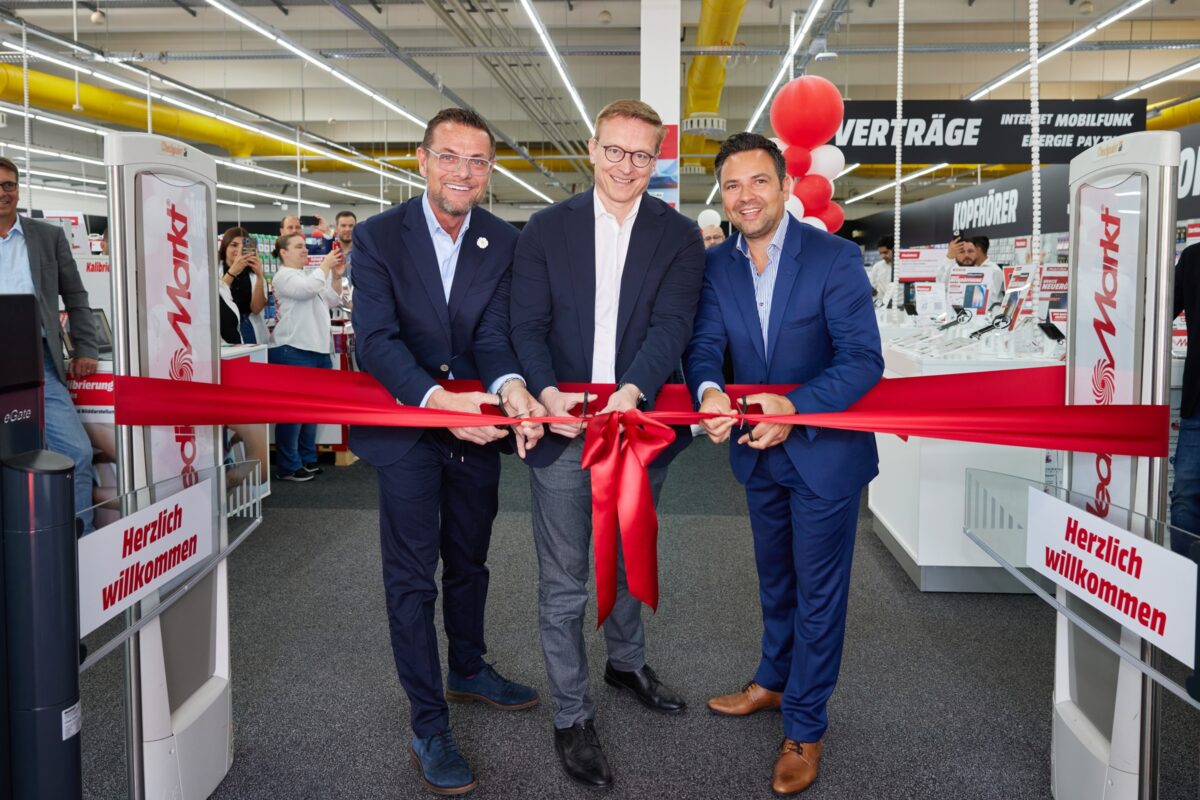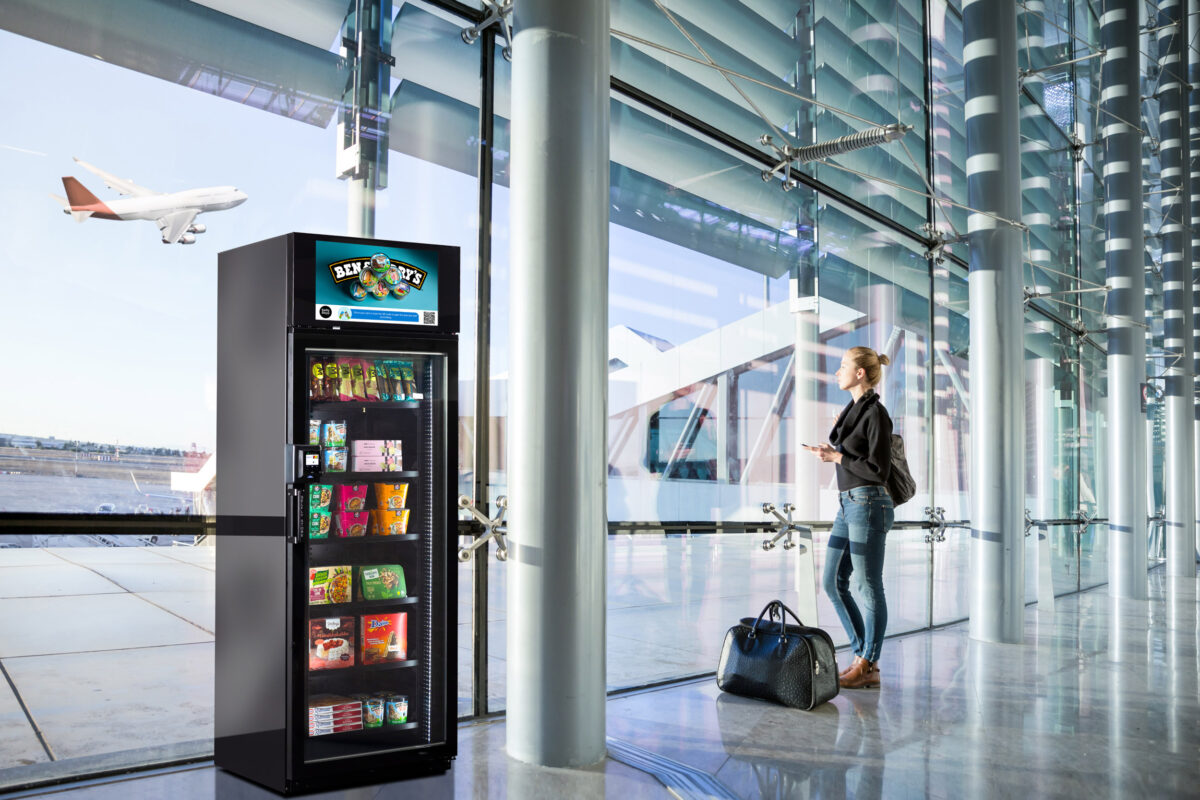Retail service robots – helper or footfall generator?
Many of us have seen their faces, even if we have never met them in person. One of these faces belongs to Pepper, the humanoid robot. It has fast become a media star.
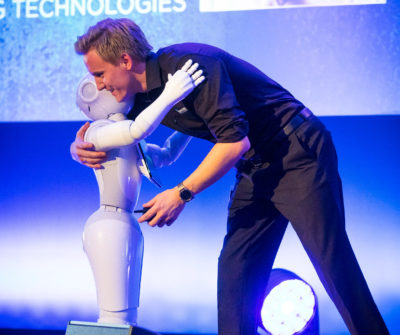
Tim Schuster, CEO of Humanizing Technologies GmbH, with robot Pepper at the ECR Day 2018 in Vienna © Humanizing Technologies GmbH
For now, robots are still a curiosity and are likely not known for being a tool of genuine usefulness just yet. Tim Schuster, CEO of Humanizing Technologies GmbH says the latter depends on the type of robot you encounter. We asked him how robotics and its use in the service sector and retail could evolve and transform the future.
Mr. Schuster, you introduce robots to the retail segment and other industry sectors. How do you do that?
Tim Schuster: We buy robots that we consider relevant for the market, like Pepper for example, and develop software that makes them applicable for particular use cases. Then we implement the robotic system at the customer site, conduct training sessions and offer support.
Which industry sectors offer the best potential in this area?
We already see many applications in the hospitality sector, in healthcare and industrial settings, in logistics, retail and the service industry. Robots can collect customer feedback, function as an intelligent information kiosk, deliver orders, track inventory items, perform mechanical tasks, assist with cognitive and brain training for seniors and so much more.
It sounds like robots can be used for all purposes.
There is no real target audience segmentation since every target group can be a candidate for robot applications. A robot can be effective in a variety of simple service tasks for example. A classic example of this is when robots answer frequently asked questions about the WiFi password, the nearest restroom or what a particular app can do.
What can Pepper do?
Aside from retail, the banking and financial industry is a great candidate for Pepper. When banks introduce new services, the challenge is to let customers know about them to ensure they actually take advantage of the services and relieve staff of menial tasks. A robot attracts attention and is able to appeal to the younger generation and impart information that the bank is typically unable to convey via its usual channels.
Our clients frequently also use Pepper as a greeter. The robot entertains people and is hugely popular with children. It is the main attraction, increases footfall to stores and stimulates interest in the media and social networks.
Consumers don’t just have positive experiences with robots. Sometimes the interaction tends to be cumbersome versus entertaining or helpful.
That’s true. There are two factors that come into play in this setting:
On the one hand, science fiction movies have set very high expectations. In these fictional future narratives, robots can frequently perform everyday tasks far better than human beings. But that’s unrealistic. Autonomous robots or robotic lawnmowers are far more realistic and plausible.
After all, we still have to overcome a variety of technical challenges. We first have to teach a machine human skills and capabilities: being able to differentiate between people and objects and understanding the vagaries of human language. Language processing and understanding is a key step.
The second factor is that some robots are not as advanced as they could be. We’re not the only software developer that brings Pepper to market. When people approach me and say that have had a bad experience with Pepper, I tell them, “You simply haven’t experienced our robot yet.”
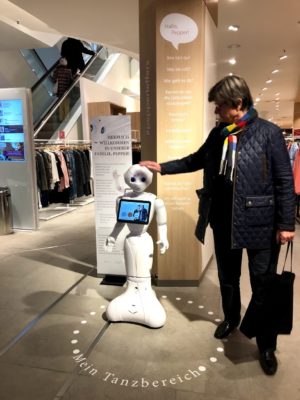
Pepper robot in action at Leffers fashion house in Oldenburg, Germany. © Humanizing Technologies GmbH
If retailers want to purchase a robot for their store, do they have to meet certain criteria or requirements?
Nowadays it’s actually quite easy for retailers to buy and use a robot. So far, we have delivered almost 100 robots to 65 different B2B customers and only received positive feedback. Some companies face special challenges, prompting us to make modifications. However, the robot is getting better and is able to increasingly handle adverse conditions.
How does the robot installation and integration work?
All of our robots are “ready to use” when we deliver them to our customers. Prior to its delivery, we set up and optimize the robot and customize it by looking at the retailer’s website and integrating the important information and design. When the robot arrives and the customer turns it on for the master training and sees the corporate design and the right information, that’s quite a happy moment for them.
We provide ready-made content for retailers. They can subsequently use drag and drop to select and edit the desired elements, much like a skills or app store. Such ready-made skills can be feedback or e-mail address queries or QR code scans. Retailers can use Pepper, for instance, to advertise their weekly offers or help customers find their way around the store. Most of the setup is self-explanatory and does not require any programming skills or extensive technical expertise.
When you look into the future, do you picture robots in every supermarket?
They will certainly not be in every store. It all depends on the customer strategy. Discounters that pursue a cost leadership and automation strategy are more likely to use robots than premium specialty retailers that focus on personalized customer service and experience.
We are still in the early stages of robotics development: Pepper is truly the first high-quality commercial robot of its kind that is more widely available on the market as a comprehensive solution. Other robot manufacturers are still in the prototyping stages and are soon heading towards series production.
Once robots can be produced in larger quantities, it will lower the costs and tip the scales: we will see robots everywhere as a matter of course, whereas human workers might become something that is more unique and turns into a competitive advantage.
Interview: Julia Pott
First published at iXtenso – Magazine for Retailers






